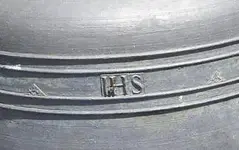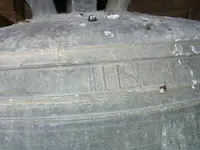E
elle
Guest
I do have another bell story if anyone is interested. It was found in the water and in a state we are all familiar with...Florida.
In 1927 the Florida Historical Society wrote an article on an old bell...a bell of Spanish origin. In that year, supposedly a museum located in Jacksonville displayed this mission bell that was one of the very few existing relics left of the Florida missions.
The bell was found near Madison, Florida, within a territory lying east of the Apalachicola River and west of the Suwannee...placing it in the Apalache country. This area was inhabited by a tribe of Indians of that name as early as 1612.
The Spanish church led to the establishment of numerous Catholic missions, and by 1635, Florida was pretty thoroughly christianized. The decline of the missions came in the 1700's when Governor Moore of Carolina captured 1,400 native Indians to be sold into slavery at Savannah. More reduction happened when the British took over Florida in 1763.
But how the bell was found is quite interesting. A man by the name of Bell (no pun intended)...was fishing in a pond in the year 1840. While Bell was wading, he stumbled over it. The clapper of the bell was dug out of a mound not far from where the bell was found in the water!
I wanted to give this description of the bell in order to compare details again with the bell from the Dominican Republic.
This bell found in Florida was cast of an alloy of tin, copper, and silver. It was eighteen inches in height, measured four feet around the base and beared the inscription SANTA MARIA ORA PROBONIS, with the date ANO 1758. It exhibited a raised cross composed of twenty-four eight-pointed stars.
If a mission bell can be found in a pond...I am quite sure Jason's wreck in the Dominican Republic holds many more religious relics. Also...there was no "IHS" on this bell...and we all know Florida was predominantly of the Franciscan Order.

In 1927 the Florida Historical Society wrote an article on an old bell...a bell of Spanish origin. In that year, supposedly a museum located in Jacksonville displayed this mission bell that was one of the very few existing relics left of the Florida missions.
The bell was found near Madison, Florida, within a territory lying east of the Apalachicola River and west of the Suwannee...placing it in the Apalache country. This area was inhabited by a tribe of Indians of that name as early as 1612.
The Spanish church led to the establishment of numerous Catholic missions, and by 1635, Florida was pretty thoroughly christianized. The decline of the missions came in the 1700's when Governor Moore of Carolina captured 1,400 native Indians to be sold into slavery at Savannah. More reduction happened when the British took over Florida in 1763.
But how the bell was found is quite interesting. A man by the name of Bell (no pun intended)...was fishing in a pond in the year 1840. While Bell was wading, he stumbled over it. The clapper of the bell was dug out of a mound not far from where the bell was found in the water!
I wanted to give this description of the bell in order to compare details again with the bell from the Dominican Republic.
This bell found in Florida was cast of an alloy of tin, copper, and silver. It was eighteen inches in height, measured four feet around the base and beared the inscription SANTA MARIA ORA PROBONIS, with the date ANO 1758. It exhibited a raised cross composed of twenty-four eight-pointed stars.
If a mission bell can be found in a pond...I am quite sure Jason's wreck in the Dominican Republic holds many more religious relics. Also...there was no "IHS" on this bell...and we all know Florida was predominantly of the Franciscan Order.










